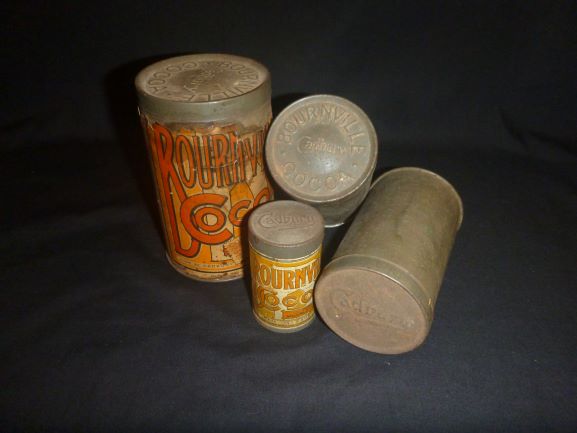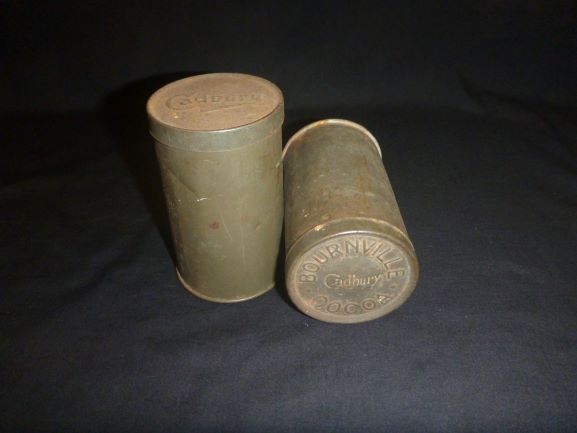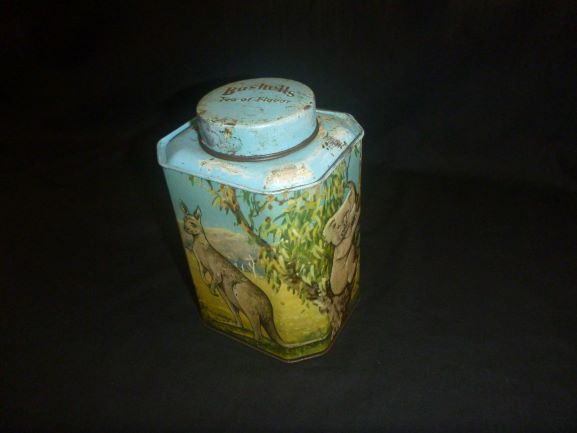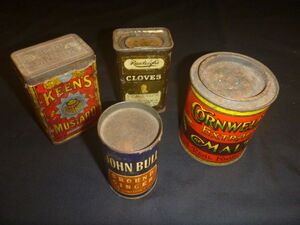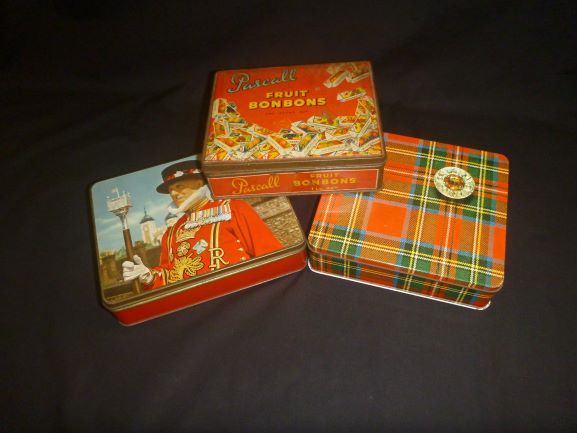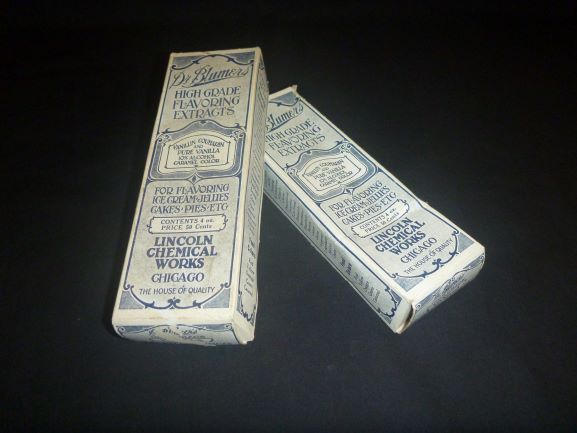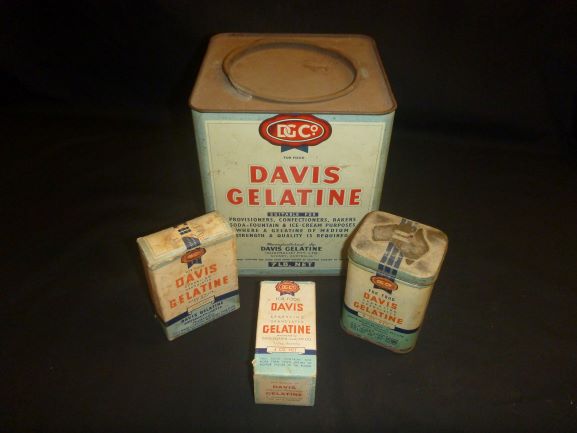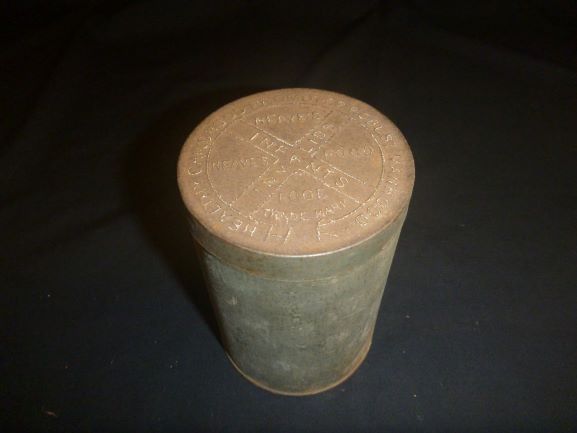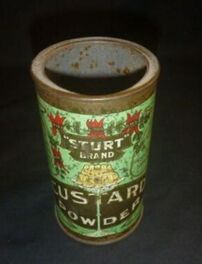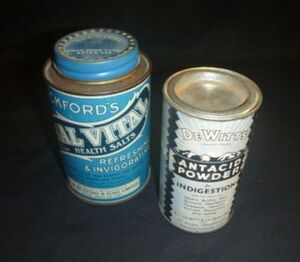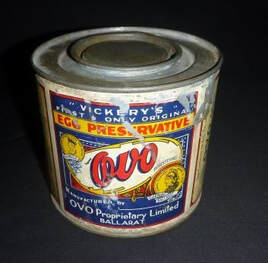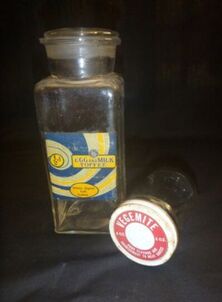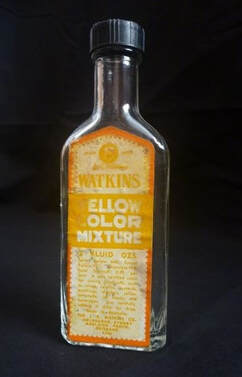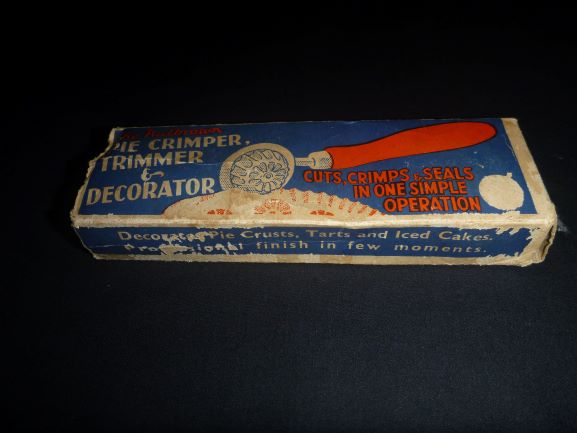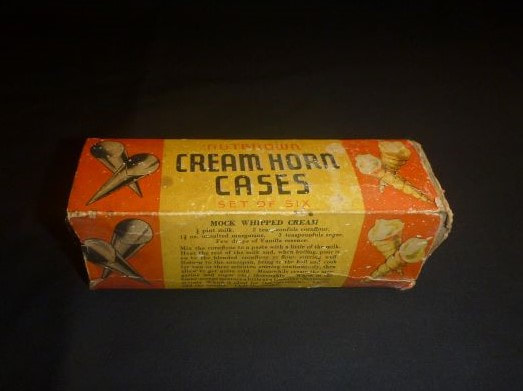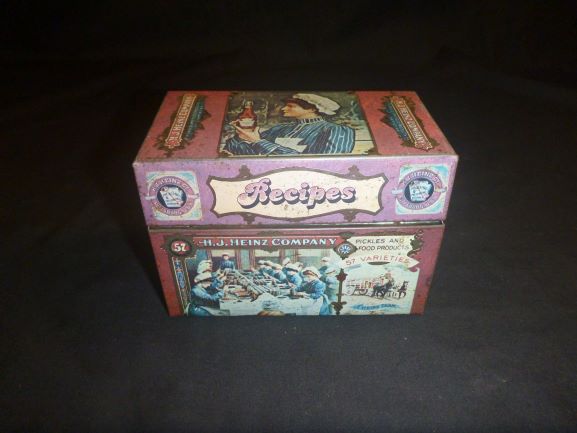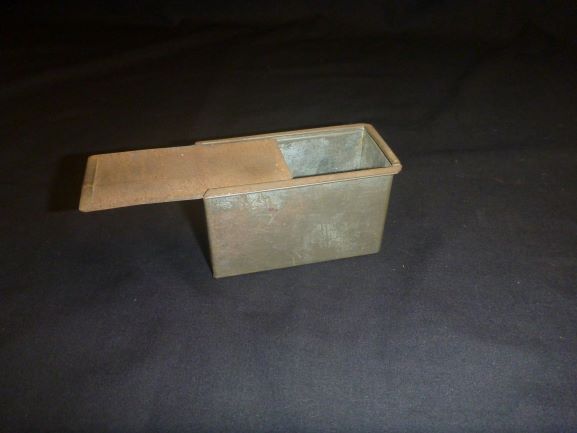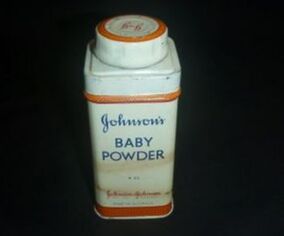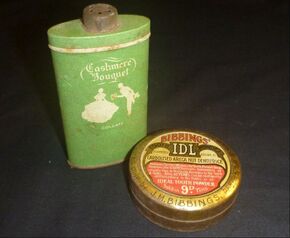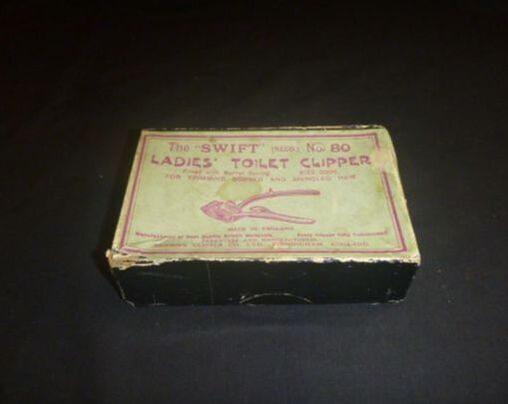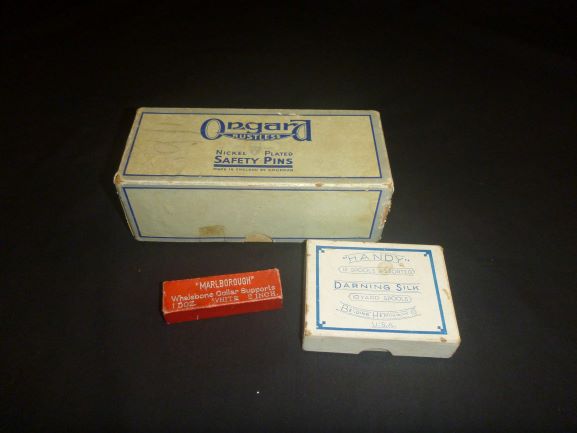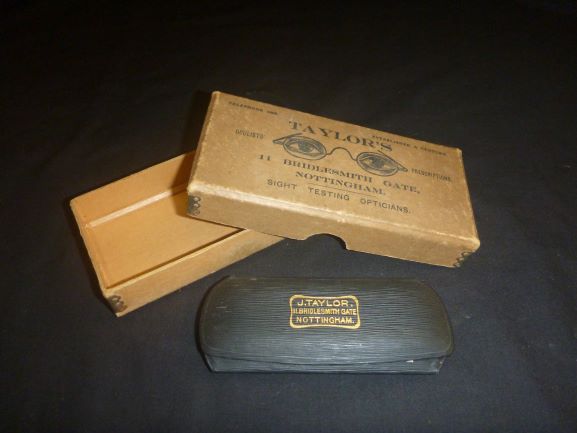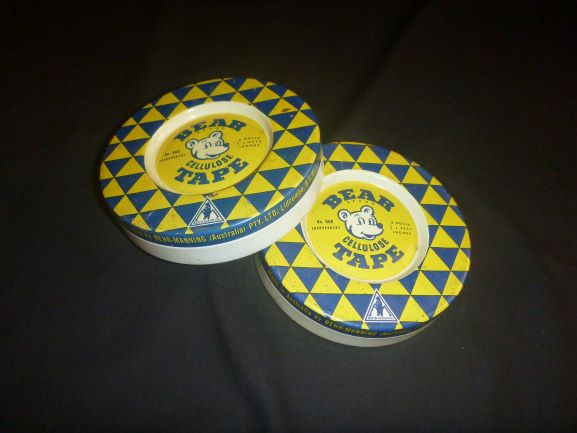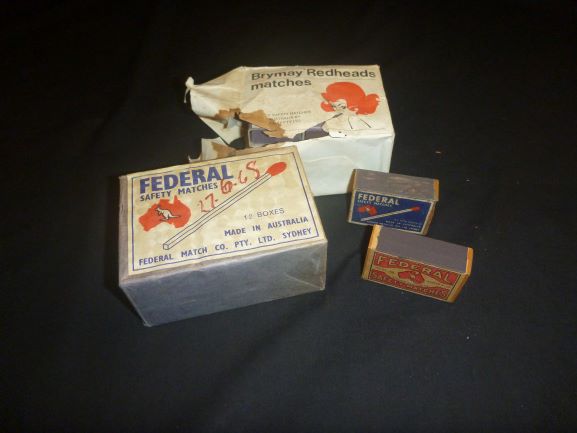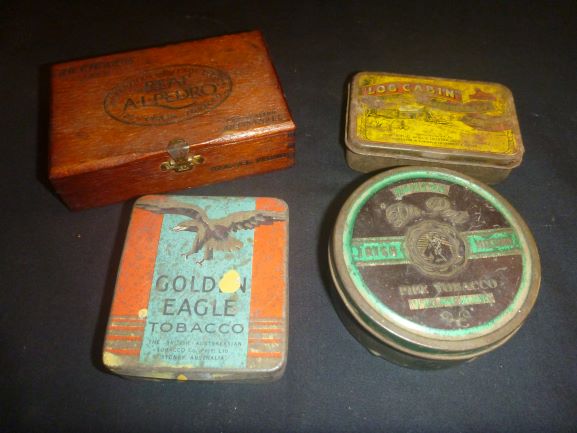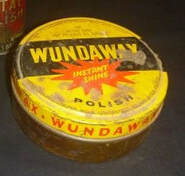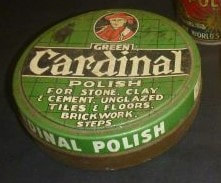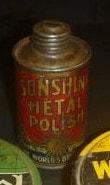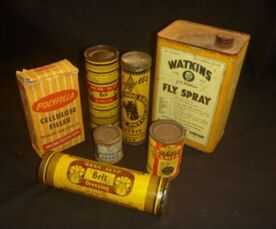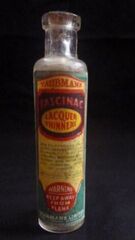Early Packaging from the 1900's to the 1960's was mainly made from cardboard, glass or tin, depending on the ingredients that were going to be placed in the packaging. Manufacturers of spices and cocoas, would prefer to use cardboard, and tin for the lid and base. Glass was mainly used for wet ingredients like colouring and syrups. New Kitchen gadgets and hand utensils, most of the time would usually be found packaged in cardboard.
For more Industrial types of packaging like Polish or Cleaners, manufacturers would prefer to use tins. Products that were usually more corrosive or made from a wetter substance, glass was a the material of choice. Coloured glass was also commonly used for most liquid poisons.
Manufactures of Industrial dry products would sometimes use cardboard or timber for their bulk packaging, but this doesn't often survive to become collectable.
For more Industrial types of packaging like Polish or Cleaners, manufacturers would prefer to use tins. Products that were usually more corrosive or made from a wetter substance, glass was a the material of choice. Coloured glass was also commonly used for most liquid poisons.
Manufactures of Industrial dry products would sometimes use cardboard or timber for their bulk packaging, but this doesn't often survive to become collectable.
